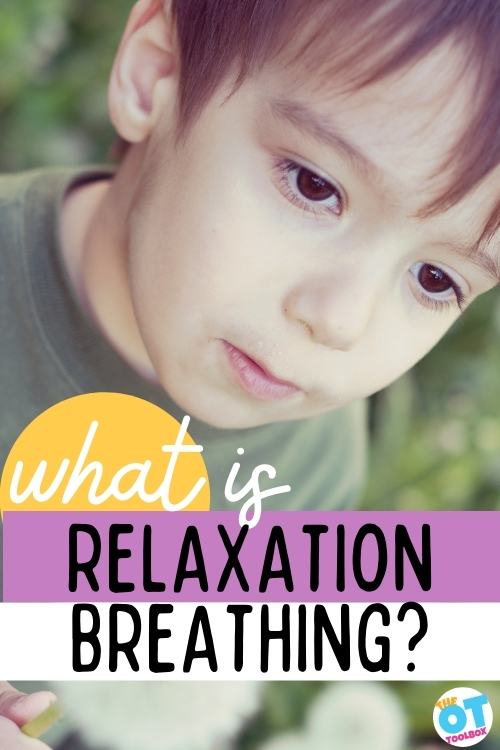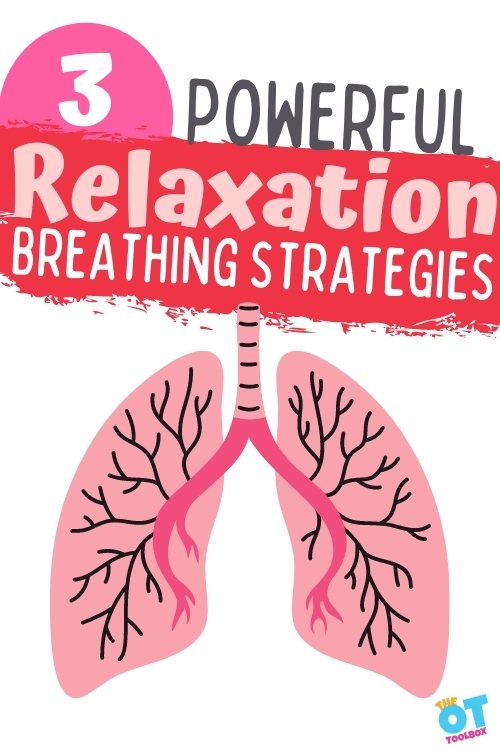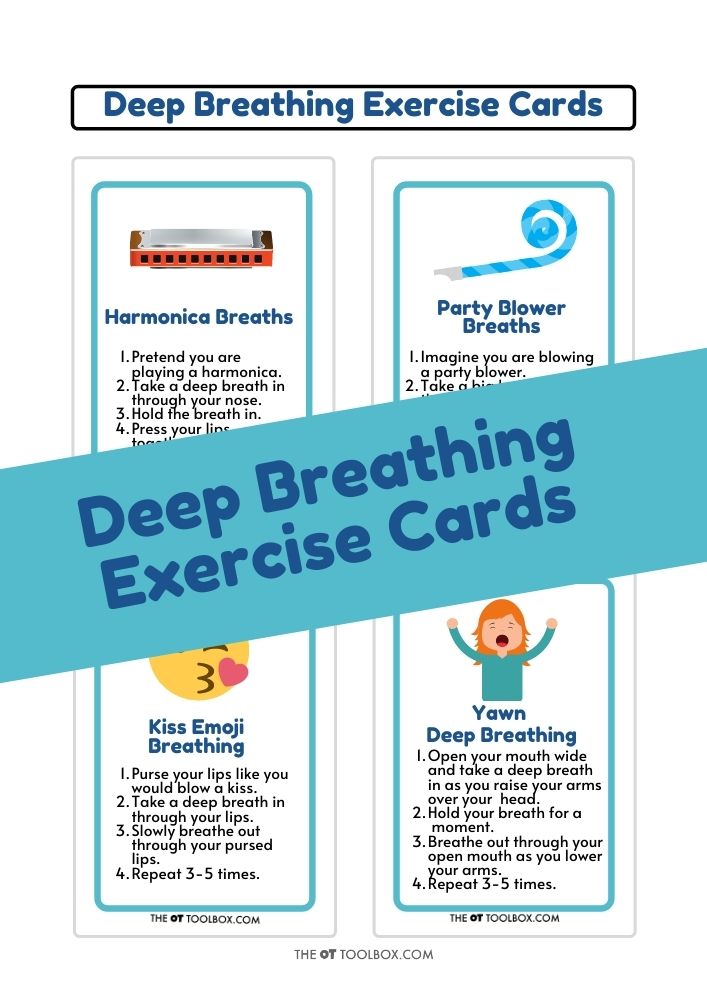If you’ve been a reader of The OT Toolbox website for long, you’ve probably seen our many deep breathing exercises. But have you ever wondered about HOW relaxation breathing works physically? How does the body calm as a result of mindful breathing strategies? Let’s explore the science of what’s going on with this breathing tool…and try out a few powerful relaxation breathing strategies, including our breathing star.

What is RELAXATION BREATHING?
Relaxation breathing is a mindful approach at deep breathing as a strategy for resetting the body. Relaxation breathing includes a deep breath followed by holding that breath for a short period (6-7 seconds), and then slowly releasing the breath over a period of about 8 seconds. This slow approach to deep breaths resets the nervous system so that we can calm the body.
This style of breath focus allows one to calm the body, manage anxiety, and self-regulate in different ways.
With relaxation breaths, you’ll notice a few changes to the body:
- Relaxation breathing slows the heart rate
- Relaxing breath control allows the body to gains a sense of awareness
- Relaxation breathing adds calming proprioceptive input through the movement of the ribs when deep breaths are taken in, held, and slowly released. This movement of the ribcage release tension and move blood through the kidneys or renal system through internal proprioceptive input.
- When the renal system calms the adrenal glands, the production of the stress hormones adrenalin and cortisol are impacted, resulting in a lower state of stress.
- Relaxation breathing engages the parasympathetic fibers in the membranes around the lungs, and has a calming effect.

3 Powerful Relaxation Breathing Strategies
What’s more, studies have found that parasympathetic activity and CNS activities are related to emotional control and psychological well-being in healthy subjects during slow, relaxing breathing techniques.
Here, we’ll cover 3 different ways to elicit the relaxation response:
- 4, 7, 8 breathing
- Breathing with the tongue on the roof of the mouth
- Nose Breathing
4, 7, 8 Breathing
Have you heard the term 4, 7, 8 breathing?
4, 7, 8 breathing is a deep breathing strategy where a deep breath is breathed in for a count of four. The breath is then held for a count of 7, and then breathed out for a count of 8.
During the time when the breath is held for a count of 7, you will notice that you can feel your lungs and ribs continue to expand. Try it!
When that expansion occurs, the fibers in the lungs stretch. This “extra breath” is a powerful calming period. The ribcage expands more during this period, offering greater proprioceptive input, and activating the vagus nerve, which has a relaxing effect.
Breathing out for a count of 8 has the same impact, where the longer breath period again moves the ribcage in a downward motion. Emptying the lungs pushes more air out and continues to offer that calming effect.
In this way, 4, 7, 8 breathing is a relaxation strategy because the counts and time of breaths in, held breath, and breathing out trigger a relaxation response.
Try 4 7 8 breathing for yourself!
breathing with tongue on roof of mouth
Another calming breathing strategy is the tongue posture with breathing with tongue on roof of mouth.
In this relaxation strategy, the tongue rests on the roof of the mouth for a simple reason: this tongue posture ensures that the individual is breathing in and out through the nose.
Also, when one is breathing with the tongue on the roof of the mouth, the tongue adds proprioceptive input through the palate in a calming manner.
Try breathing with your tongue on the roof of your mouth for yourself!
Breathing through the nose
As explained above, when the tongue is resting on the roof of the mouth, nose breathing is ensured. Here’s why that is important:
When breathing in and out with the tongue on the roof of the mouth, nose breathing is enabled, and the parasympathetic response results in relaxation.
When breathing though the nose, the structures of the nose actually regulate airflow and slows the flow of air because of the those physiologic structures.
This PDF titled The Healing Power of the Breath explains more.
Try breathing through your nose for yourself!
Relaxation Breath Strategies
Hopefully, these relaxation breath strategies have offered some explanation on how deep breathing in both the 4, 7, 8 method, nose breathing, and breathing with the tongue on the roof of the mouth are powerful relaxation breath tools to use in self-regulation and coping.
Try these additional relaxing breathing activities paired with the breath strategies listed above.
- Deep Breathing Exercise Cards
- Pair the relaxation breathing strategies with quiet music or a darkened space
- Pair the breathing tactics with progressive muscle relaxation
- Deep Breathing Exercises for the Whole Year
- Incorporate meditation
- Mindfulness for Kids

Help kids with coping strategies using themed, practical belly breathing strategies that work.
- Includes A-Z alphabet exercises for whole body exercises
- 9 different themes to use in learning or therapy themes
- Oral motor exercises for heavy proprioceptive input through the mouth, tongue, and lips
- Exercises that can be used any time or anywhere!
Need help getting kids to focus, pay attention, or calm worries? Need help with self-regulation in a calm-alert, ready-to-go state, so they can learn, play, and function?
Achieving a self-regulated state of focus, attention, and being ready to go doesn’t need fancy therapy equipment or sensory tools. Deep breathing exercises are tools that we can all use, any time, and any place!
These deep breathing exercise cards includes 113 different deep breathing exercises that can be printed and used in therapy, home programs, the classroom or at home.
Grab your copy of Deep Breathing Exercise Cards here.

Colleen Beck, OTR/L has been an occupational therapist since 2000, working in school-based, hand therapy, outpatient peds, EI, and SNF. Colleen created The OT Toolbox to inspire therapists, teachers, and parents with easy and fun tools to help children thrive. Read her story about going from an OT making $3/hour (after paying for kids’ childcare) to a full-time OT resource creator for millions of readers. Want to collaborate? Send an email to contact@theottoolbox.com.






